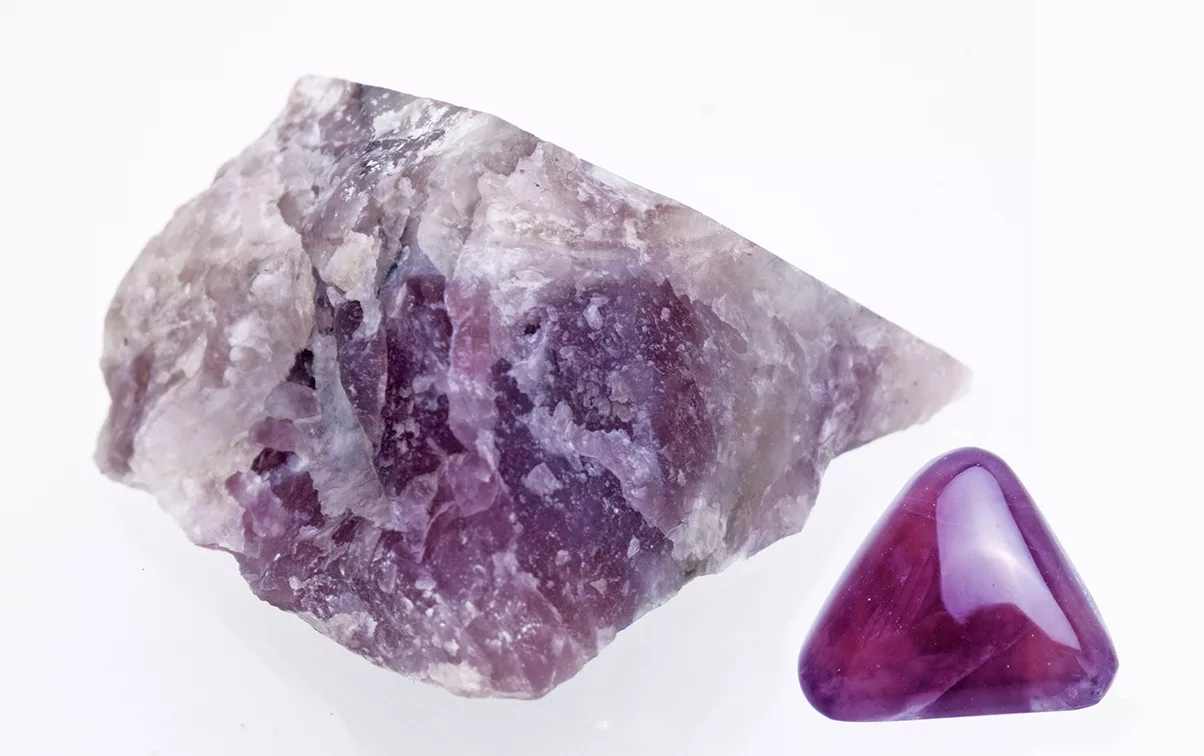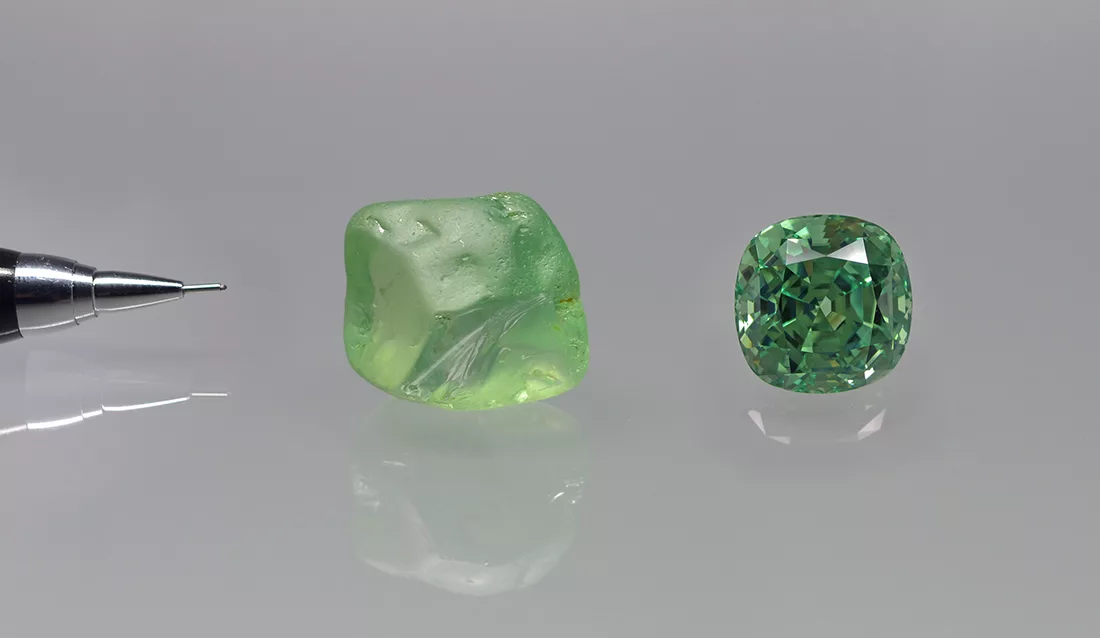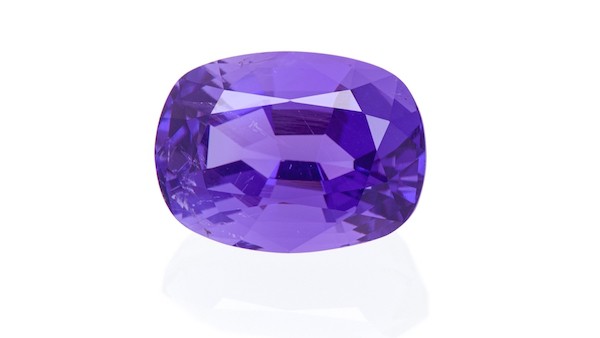
Deep purple vesuviatine from Pakistan

by Prof. H.A. Hänni, first published in Facette 26 (May 2020)
stan has a number of gemstone deposits that are related to the collision of the Indian continent with the Eurasian plate, a consequence of global plate tectonic movements.
The gem-producing areas lie in a thrust zone known as Karakorum Suture Zone. There, sediments from the Tethys Sea were welded on the Eurasian plate when the Indian continent collided into Eurasia some 65 Mio years ago. Triassic carbonate sediments and oceanic crust were imbricated in a tectonic movement. Better known examples of gemstone formations from Pakistan are emerald, topaz, peridot and many more. Sannan Skarn, a green ornamental stone, is a more recent discovery (see Hänni in SSEF Facette No. 24).
Recently, we got new material from Rainbow Minerals Ltd. (Peshawar) that turned out to be vesuvianite. Vesuviane is a complex calcium silicate that is known as facetable single crystals, but also as polycrystalline vesuvianite. Common colours are green to brown, and the colour giving element commonly is iron. Thorough chemical analyses by LA-ICP-TOF- MS revealed that the new material from Pakistan is coloured by traces of manganese and iron that lends the stone a deep purple colour (Fig. 1). Identification was straightforward and done by Raman spectroscopy. A summary chemical analysis by ED-XRF shows the chemical elements in a qualitative way, but does not provide a mineral formula. For the precise quantitative composition values of the samples, mass spectrometry was used. By scanning electron microscopy (SEM) tiny inclusions were found and identified as apatite. The described deep purple polycrystalline vesuvianite from Pakistan is translucent and can serve for cabochons and carvings. A more detailed description of this material will be published soon in gemmological journals in German, Chinese and English.


